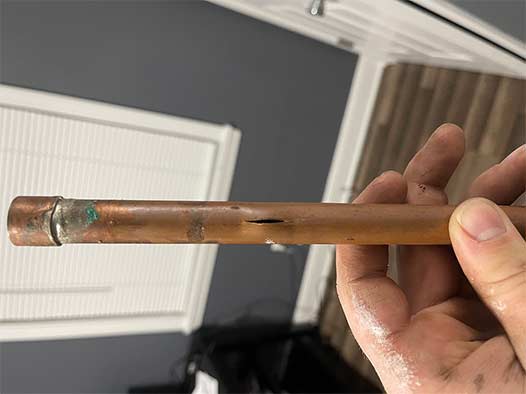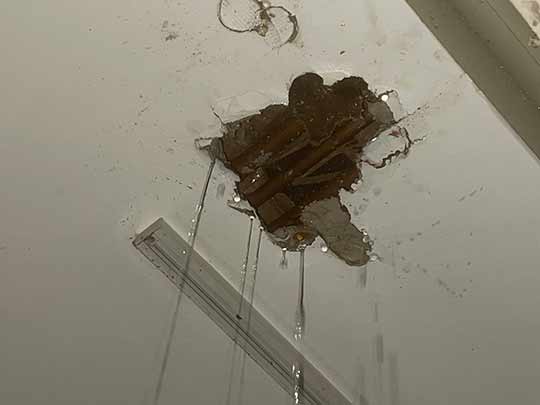
As the saying goes, “Home is where the heart is.” We understand how much you cherish your homes, and we want to help you protect and maintain them. One of the most common challenges homeowners face is dealing with burst pipes. Burst pipes can cause extensive damage and inconvenience, but fear not! Below we will provide you with step-by-step solutions to tackle this issue effectively.
Understanding Burst Pipes
Before we get into the solutions, it’s essential to have a basic understanding of burst pipes. Burst pipes occur when water freezes and expands in the pipes, causing them to crack or rupture. It typically happens during colder seasons or in unheated areas of your home, such as attics, basements, or crawl spaces. Burst pipes can cause water leakage, leading to property damage, flooding, and costly repairs if not addressed promptly.
Step 1: Shut Off the Water Supply
The first and most crucial step in dealing with burst pipes is to shut off the water supply to your home. Locate the main shut-off valve, which is usually in the basement or near your water meter. Turn the valve clockwise until it is fully closed. This will stop the water flow and prevent further damage. It’s important to familiarize yourself with the location of the shut-off valve beforehand, so you can act swiftly during emergencies.
Step 2: Open Faucets
Once you have shut off the water supply, open all the faucets in your home, including both hot and cold water taps. By doing this, you will help relieve the pressure inside the pipes and minimize the potential for further bursting. Leave the faucets open until the issue is resolved, and keep an eye out for any changes in the water flow.
Step 3: Identify the Burst Pipe
Now that you have taken immediate measures to prevent further damage, it’s time to identify the location of the burst pipe. Start by inspecting the areas where pipes are exposed, such as the basement, crawl spaces, or utility rooms. Look for signs of water leakage, wet patches on walls or ceilings, or the sound of dripping water. Also, pay attention to any unusual smells or mold growth, as these can indicate water damage.
Step 4: Temporary Repair
While waiting for professional assistance, it’s crucial to perform temporary repairs to minimize the damage caused by the burst pipe. Here are a few temporary solutions you can implement:
- Use a pipe clamp: If the burst is a clean split, you can use a pipe clamp to secure the area temporarily. Place the clamp over the affected section and tighten it using a screwdriver or a wrench. This will provide stability until a permanent fix is applied.
- Apply epoxy putty: Epoxy putty is a waterproof adhesive that can be used to seal small cracks or leaks. Knead the putty according to the manufacturer’s instructions and apply it to the affected area. Smooth it out and let it cure as per the recommended drying time.
- Wrap with rubber or silicone tape: Another temporary solution is to wrap the burst section with rubber or silicone tape. Start a few inches before the crack and continue a few inches beyond it. Wrap the tape tightly in overlapping layers to create a watertight seal.
Step 5: Seek Professional Help
While temporary repairs can help manage the situation for the time being, it is essential to seek professional help to permanently fix the burst pipe. Contact a licensed plumber who specializes in burst pipe repairs to assess the damage and provide a professional solution. They have the expertise and proper tools to ensure a long-lasting repair and prevent future incidents.

Insulation helps protect the pipes from freezing temperatures and reduces the risk of bursting.
Preventing Burst Pipes in the Future
Now that you have successfully dealt with a burst pipe, it’s crucial to take preventive measures to avoid similar situations in the future. Here are some tips to keep in mind:
- Insulate pipes: Properly insulate exposed pipes, especially those in unheated areas or near exterior walls. Insulation helps protect the pipes from freezing temperatures and reduces the risk of bursting. Use pipe sleeves, heat tape, or foam insulation to provide an extra layer of protection.
- Maintain heating: Keep your home well heated, even during colder seasons or when you’re away for an extended period. Maintaining a consistent temperature helps prevent pipe freeze-ups.
- Seal openings: Seal any gaps or openings near pipes that allow cold air to enter. Use caulk or insulation to close these gaps effectively.
- Allow faucets to drip: During extremely cold weather, allow faucets connected to vulnerable pipes to drip slightly. This will promote water flow and prevent freezing.
- Keep interior doors open: Keep interior doors open to allow heat to circulate evenly throughout your home. This helps in preventing cold spots that can lead to frozen pipes.
- Drain outdoor faucets: Before the freezing temperatures set in for winter, disconnect and drain any garden hoses or outdoor faucets. This prevents water from freezing and causing damage to the pipes.
In Conclusion
Congratulations! You have successfully learned how to deal with burst pipes step by step. By following the solutions we’ve provided in this article, you can minimize damage and prevent further complications. Remember, shutting off the water supply, temporary repairs, and seeking professional help are key steps in addressing burst pipes. Additionally, implementing preventive measures can help you avoid such situations in the future. Stay proactive, maintain your home, and enjoy peace of mind knowing you can handle burst pipes effectively!

